Splatoon 3 review: Squids in
A refined sequel for one of the freshest and brightest shooters around
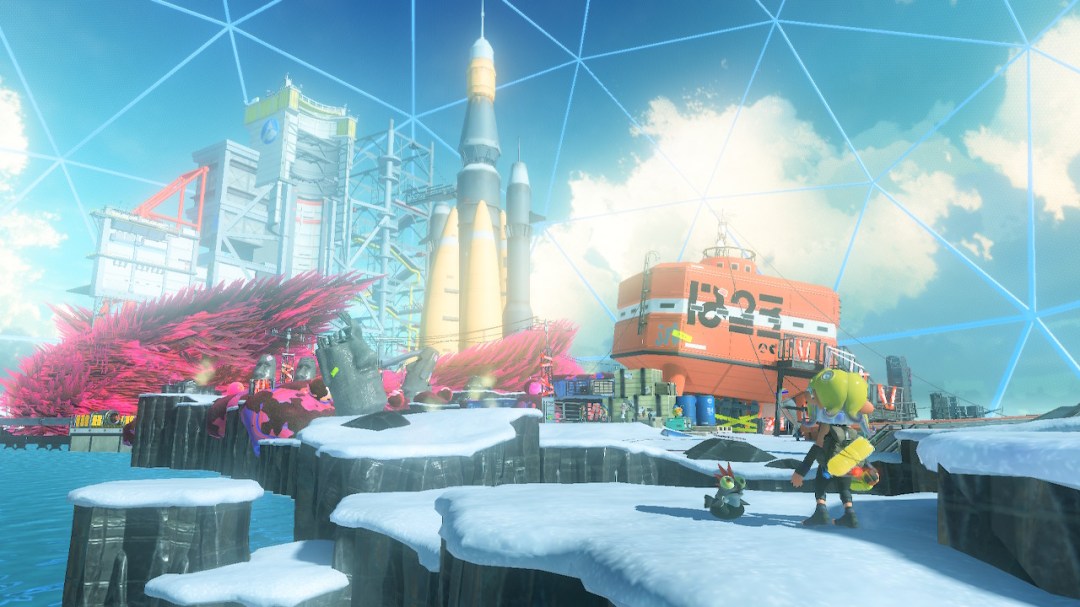
As the 10th anniversary of the Wii U approaches, when the retrospectives of Nintendo’s biggest failure to date get written up, it will be impossible not to include one of its biggest highlights: Splatoon.
Not only was it the first brand new IP the house of Mario had released in a long time that made a splash, it also successfully gave a new family-friendly spin on the usually highly competitive team-based shooter stereotypically reserved for laser-precise and instant-reflexive teens screaming down their headsets.
A sequel in the launch year of the significantly more successful Nintendo Switch only served to grow its popularity as something that stood apart from the hero shooters and battle royales beginning to dominate the shooter landscape. This is perhaps why, five years later, Splatoon 3 doesn’t really need to do much to break the mould, quite simply because there isn’t another game quite like it. But when much of this genre can now be played for free, will this be enough to entice newcomers and is there enough to please existing fans to get their ink on? Read on to find out!
Turf’s up
For those unfamiliar with Splatoon, the difference it has from other team shooters is that it’s not really concerned with accuracy and kills. For its signature mode Turf Wars, two teams of four compete for dominance of the map by inking it in their team’s colour using a variety of weapons that look like super soakers, as well as painterly variations like an inkbrush or a paint roller, while this new iteration includes a bow for those with better aim.
While your ink can slow down, damage and ‘kill’ opposing players, the key to victory is actually ensuring the map is covered in your ink, which immediately makes it accessible for less trigger-happy players as simply holding the fire trigger means you’re contributing, while being able to see how much ink the map has been covered, or where enemy ink is makes the action easy to parse without any further means of communication.
That formula hasn’t changed in Splatoon 3, with every match a messy bit of chaos that’s also over in three minutes so that it’s over before you ever get too heated (unless you’re on the receiving end of an annoyingly skilled Splat Charger user anyway). The only difference is at the beginning, where perhaps taking a leaf from battle royales, your squid (or now also octo) kids are launched onto the map, as well as the end where you earn medals that neatly summarise your individual performance, which also takes the sting out of any defeats.
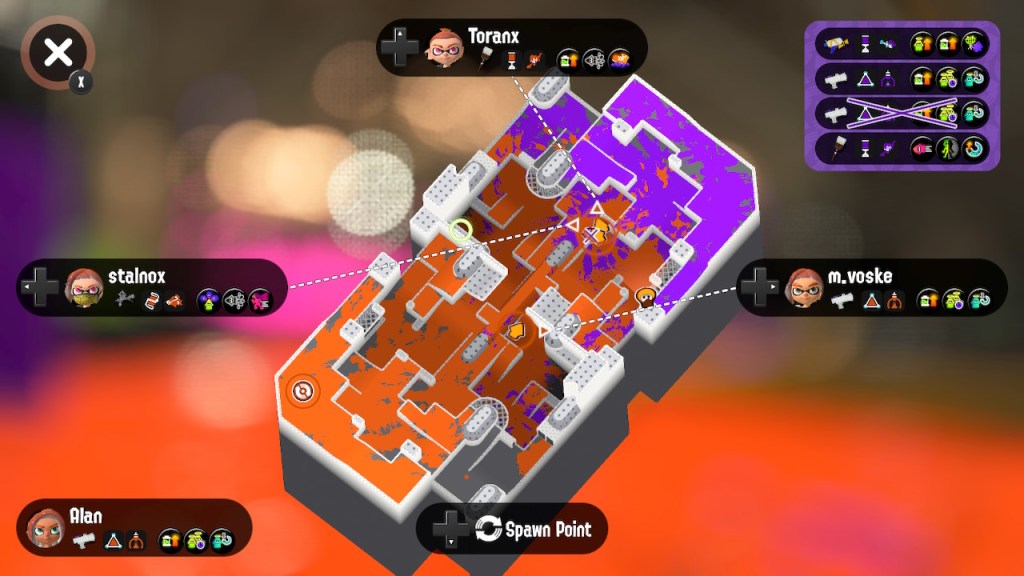
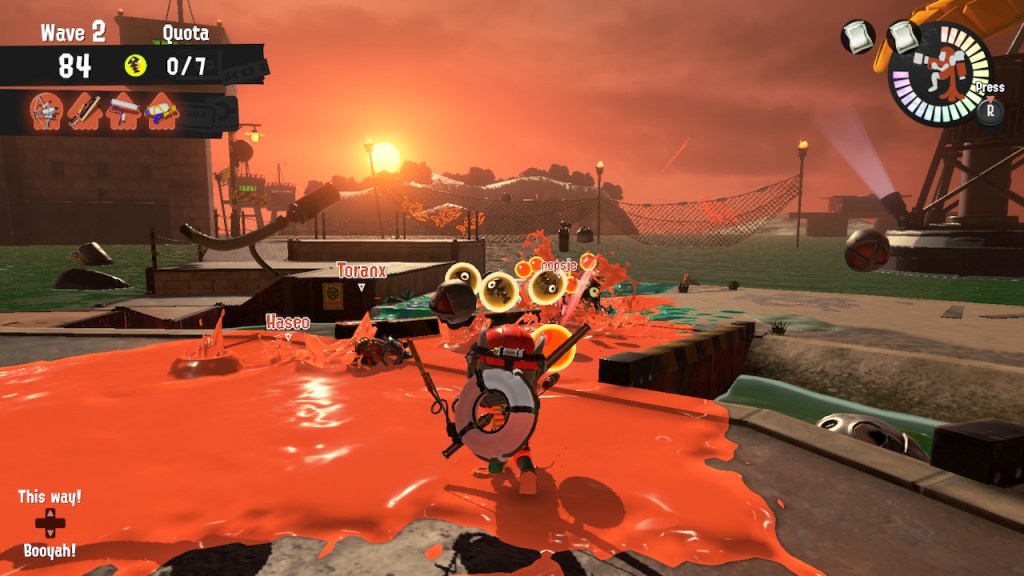
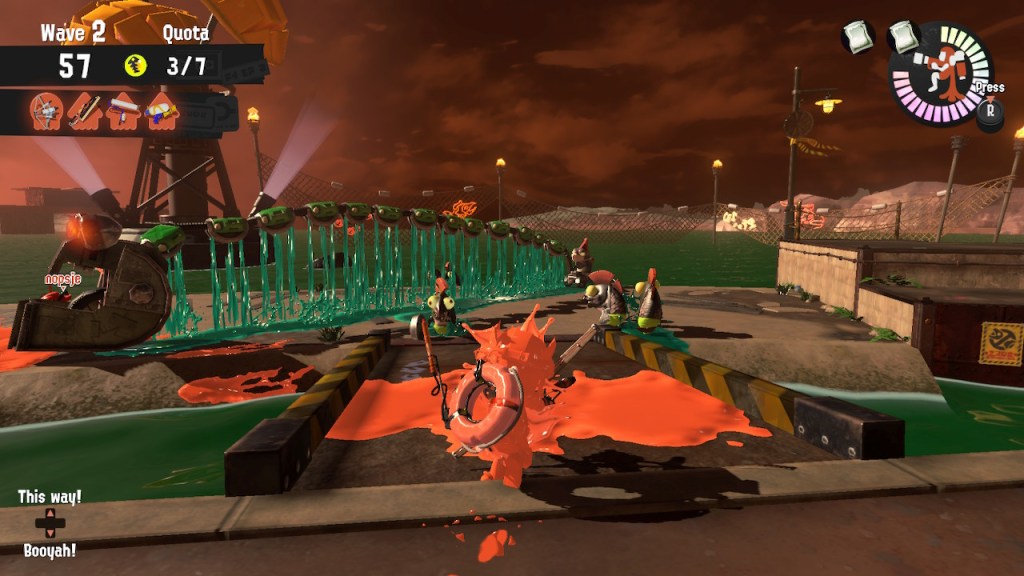
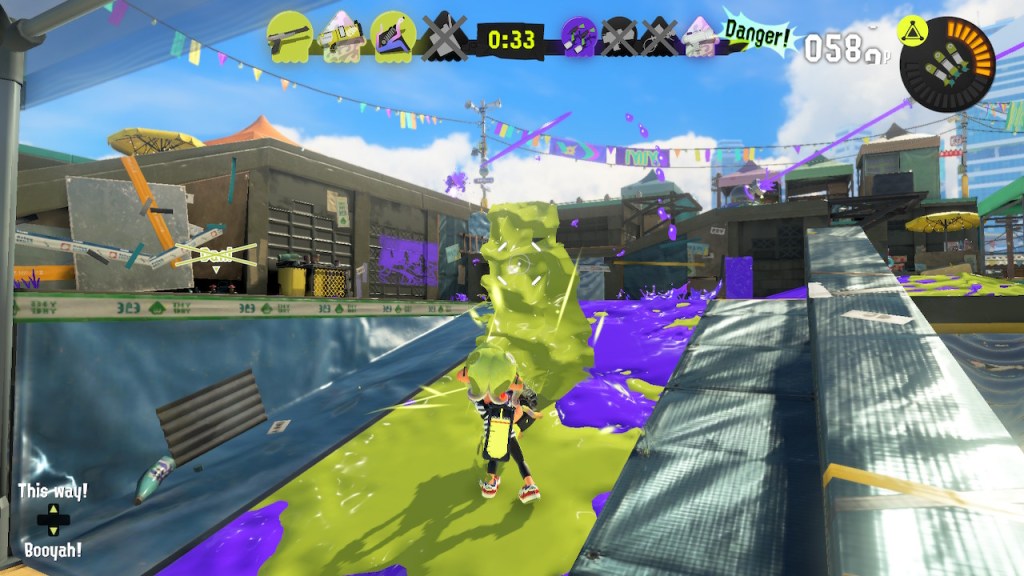
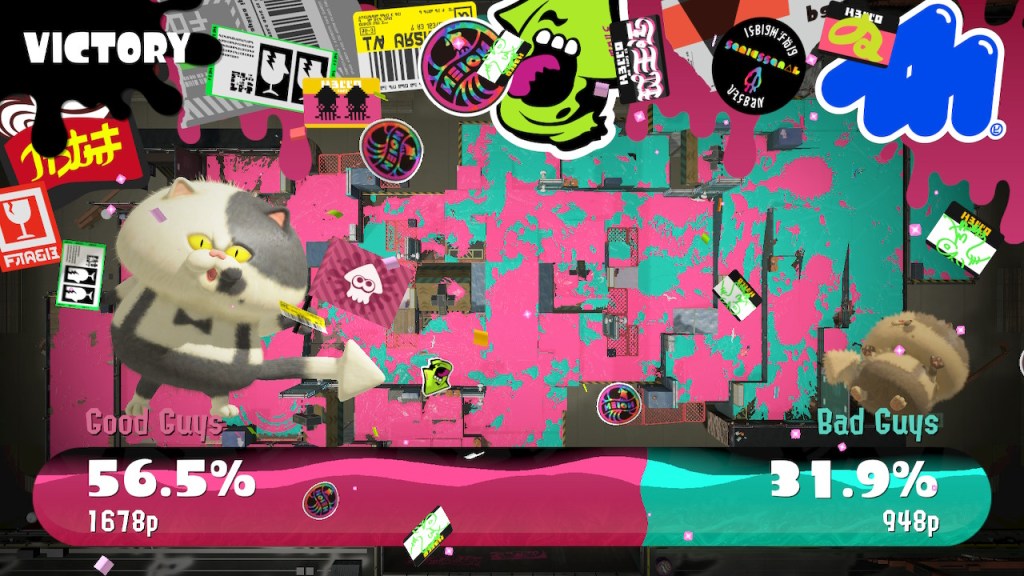
Run Salmon Run
Of course, it’s not just about Turf Wars as, since Splatoon 2, there’s also been horde-style PvE mode Salmon Run, where you join a team of four players to farm golden eggs in perilous conditions for a mysterious and shady employer on a map that’s surely a commentary on environmental disaster capitalism. But while the original mode was bizarrely only accessible at set times, this is now available all the time, which means players who prefer co-op to PvP can feasibly just focus on Salmon Run – terrific news, unless you start reading into it as a grim comment on the always-on gig economy, hmm.
In any case, these matches are a blast for those looking to take on ever-mounting challenges against hordes of Salmonids as well as the tougher Boss Salmonids who drop the prized golden eggs you need to make quota for each of the three waves. Overall, this is as much a case of iteration, with a few more new types of Boss Salmonids, which you even have the option to practise against beforehand, while those who make it to the end of the three waves also occasionally have the chance to go against a tougher boss as a bonus round.
It does however come with one additional mechanic where you can now lob eggs instead of carrying them all the way to the egg basket, or hopefully, relay it to another teammate while you hurry back to collect more eggs or face another boss. It makes for much-improved pacing, and once you’re banking those eggs you’re laughing all the way to the bank.




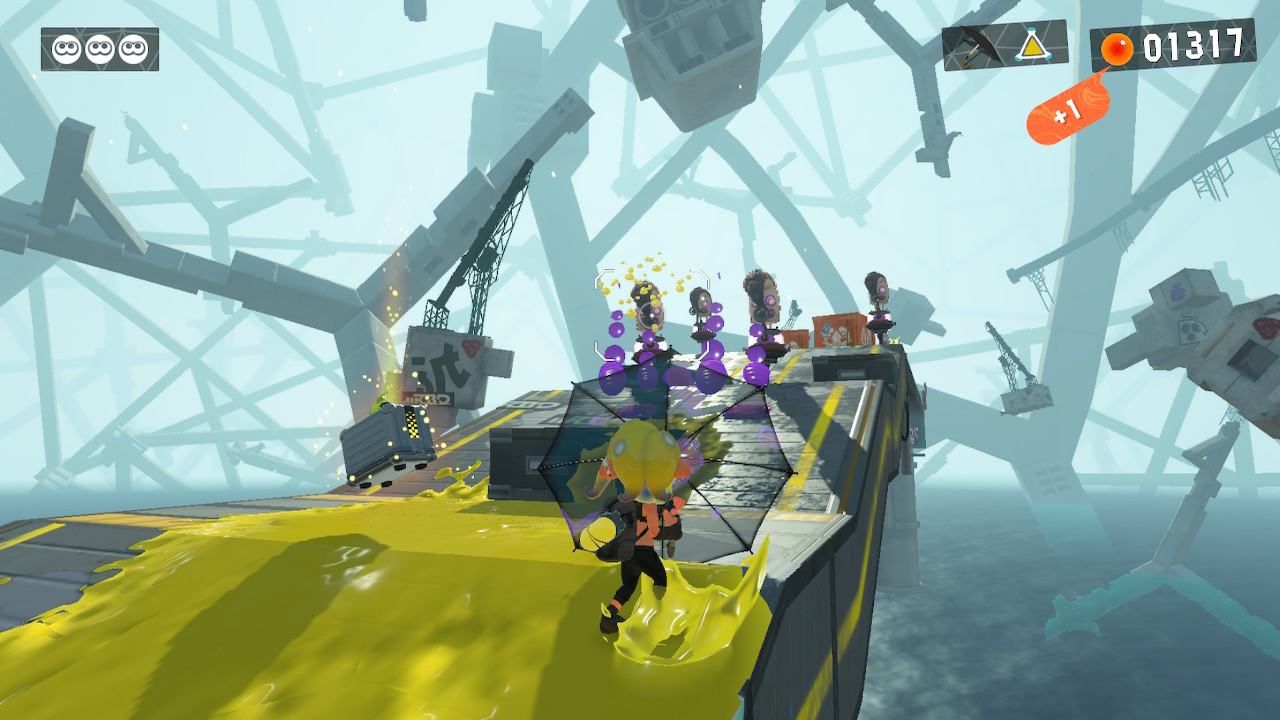
Into the Splatlands
Single-player modes aren’t usually the main draw for multiplayer-based shooters (indeed, it’s a rarity to actually include one these days), but Splatoon 3 has largely improved from its predecessors, with a campaign also contains some surprisingly deep lore into the post-apocalyptic dystopia that’s just bubbling beneath all its trendy style.
In some ways, missions feel like glorified obstacle courses, sometimes focusing on a mechanic or gimmick from the core game into levels almost on par with what Mario gets up to on his adventures. Nonetheless, some of the gimmicks, notably the new Zipcaster grappling ability, also work much better as the focus of a single-player level than as a special ability in Turf Wars.
These missions are all connected to fairly large hubs that you gradually uncover more of by clearing ooze that’s also suspiciously covered in fuzzy hair, a hint to the campaign’s title, Return of the Mammalians. Suffice to say, we won’t spoil anything, but the story certainly goes places with some surprising adversaries. While never quite as challenging as Splatoon 2’s excellent Octo Expansion, it nonetheless builds on those similar foundations with plenty of missions to unlock, collectables to find, and even its own skill tree, to become the series’ most substantial campaign.


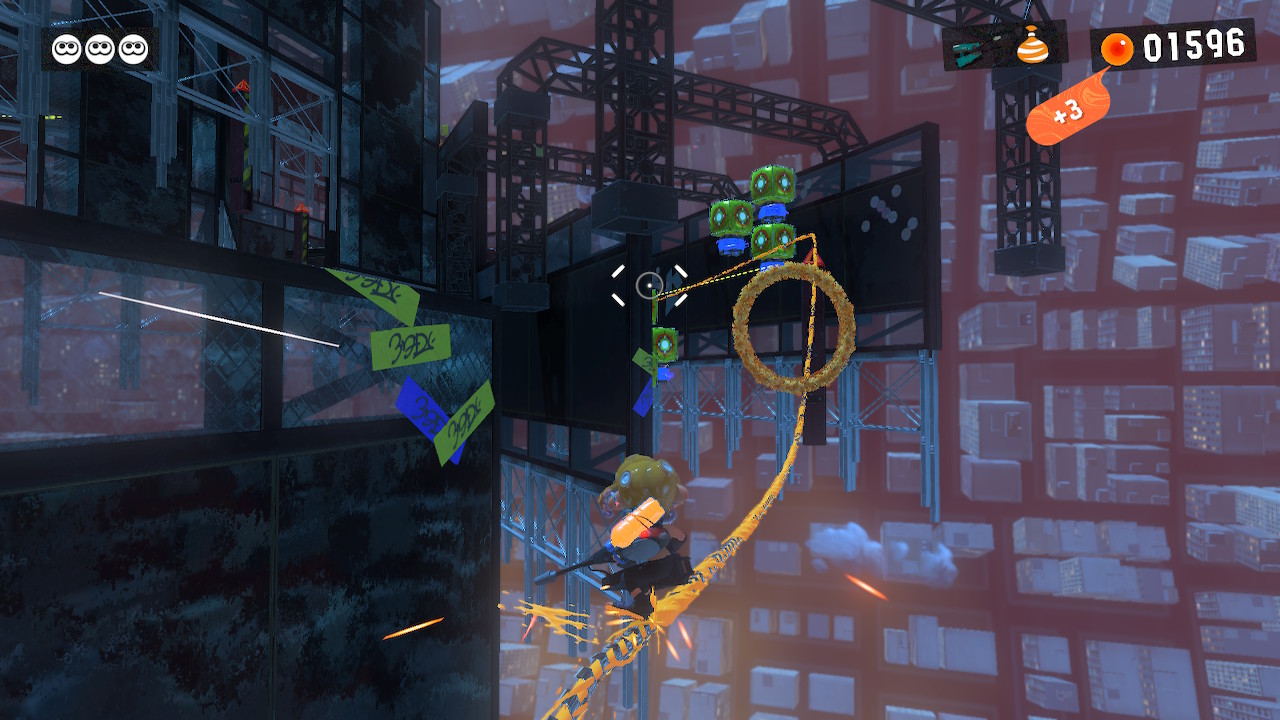

Stay fresh
Splatoon 3 may not graphically push the now five-year-old Switch hardware, but still gives its aesthetics a fresh change, from the new hub setting of Splatsville to new band/presenters Deep Cut, which all lean into a marine twist on Japanese street fashion and culture.
There’s also greater customisation for the player, whether that’s being able to unlock a variety of name tags and backgrounds or even decorating your own locker room for other players to check out. It’d hardly be a surprise if players spend more of their hard-earned in-game cash on all the cosmetic options over actually improving their gear, though at least weapons are acquired by using tickets earned from winning matches.
Unfortunately, Splatoon 3 still lags behind other online shooters when it comes to the actual online experience. The new lobby system, while a neat idea so that you’re not just sitting around during matchmaking, is still restrictive in what you can do, and while you can see other players in your current game as ghosts, you can’t actually interact with them, while it retains a rigid structure where you either match with complete randoms or must have a full team of friends at all times. If you really plan to use voice chat, you’re still better off with using a third-party app like Discord rather than Nintendo’s own underwhelming online app.
Yet these grumbles aren’t egregious enough to spoil the essence of a match, which due to its accessibility and match lengths, mean you don’t really need to depend on these other features to have a good time. And with at least two years of post-launch content promised, including the always exciting Splatfest events to galvanise the player base, there’s plenty to ensure Splatoon 3 will stay fresh.
Splatoon 3 verdict
With just about enough new features to justify that new number on the end, Splatoon 3 may ultimately be an iteration more than breaking new ground for the series, a statement that can admittedly be levied at almost any other shooter on the market, to be fair. But that’s also ultimately because there’s little that needs changing from an approachable premise that set it apart from others in the genre, as well as its own distinct and effortless style.
Add to that the substantial single-player mode and Salmon Run available all the time, and all sorts to unlock be it purely cosmetic or actually to give yourself the slight edge, and there’s plenty for players of all stripes to get stuck into.
Stuff Says…
While mostly an evolution, Splatoon 3 still remains one of the freshest shooters you can find anywhere
Good Stuff
Turf Wars as fun and easy to parse as always
Great sense of style with more customisation
A more substantial and varied single-player mode
Salmon Run whenever you like
Bad Stuff
Not all new abilities feel like they make much difference
Lobby, match-making and voice chat systems still restrictive compared to competition
